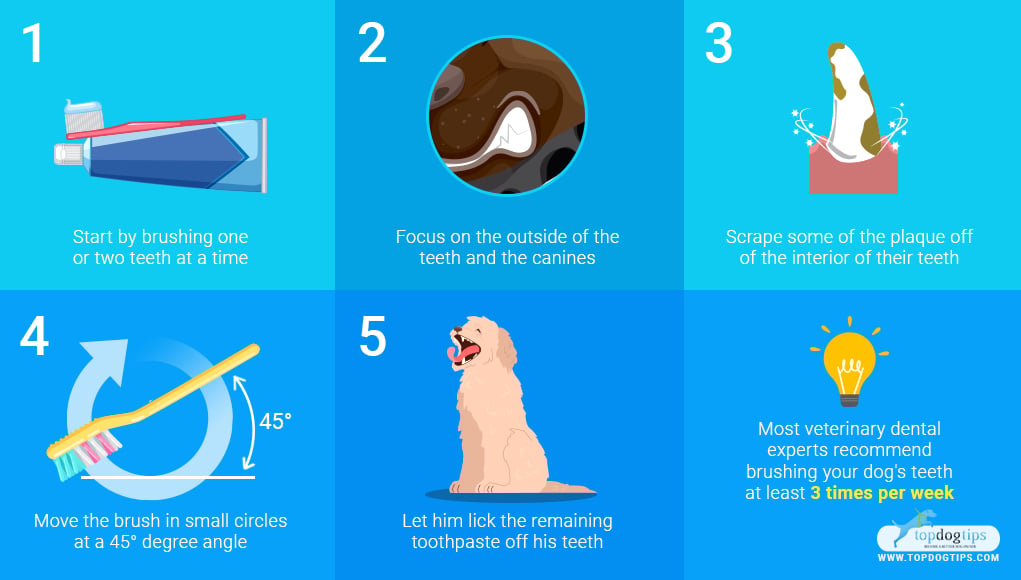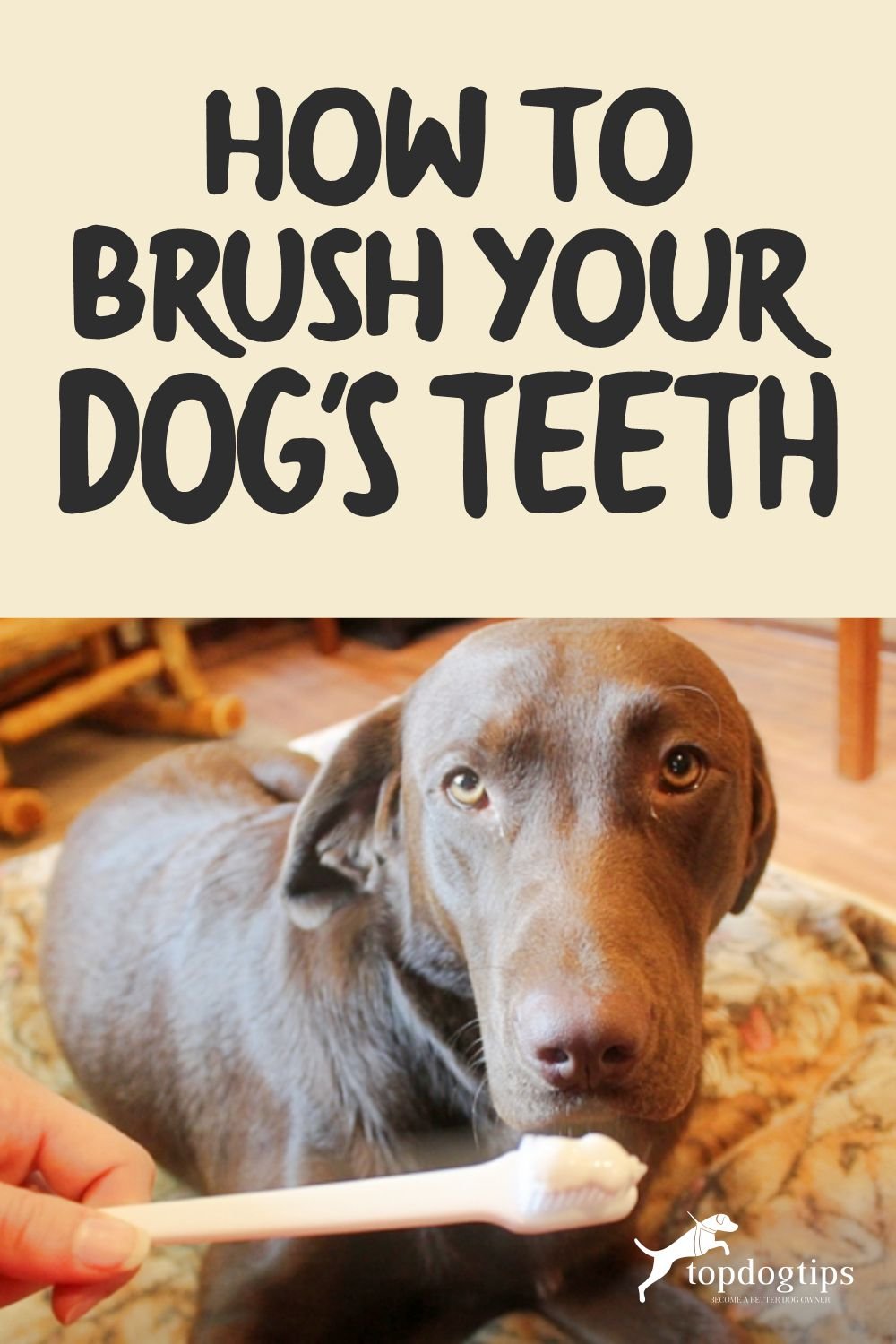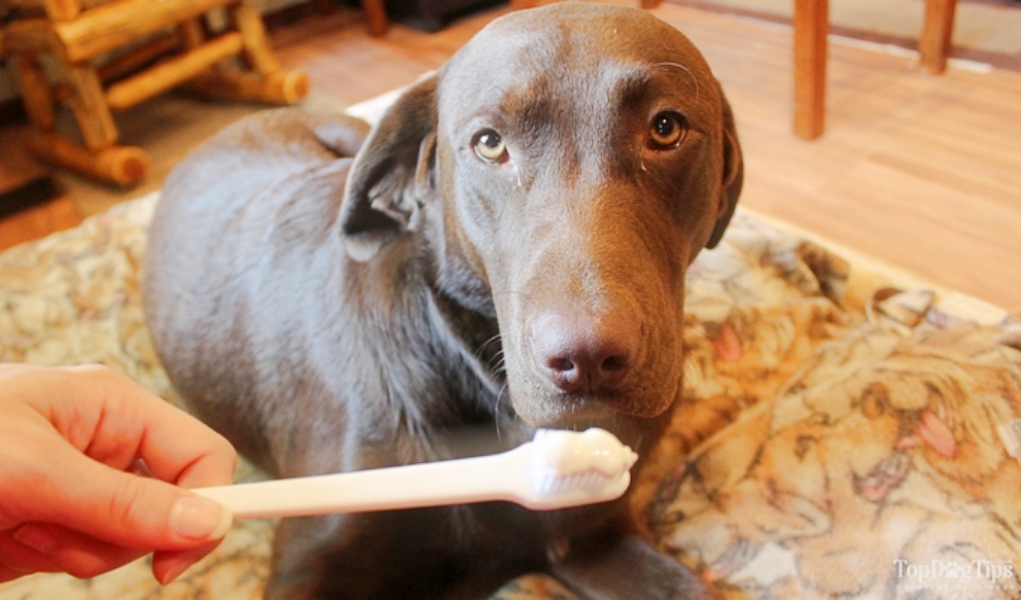Like humans, dogs should have their teeth brushed every day. Periodontal disease is one of the most common health conditions seen in adult dogs. Sadly, it's also the most preventable. Knowing how to brush your dog's teeth could add years to your pet's life!
While most people believe that all dogs have bad breath, that's actually not true at all. Your dog should NOT have bad breath. Bacteria in your dog's mouth is what causes bad breath, and do you know what helps to get rid of that bacteria? That's right! Daily brushing.
Bad breath isn't the only thing you need to worry about if you neglect your dog's oral hygiene. Proper dental care will aid in your dog's overall health and well-being. If you don't care for your dog's mouth, teeth and gums, it could lead to serious health conditions including:
- destruction of and loss of gum tissue and bone around the teeth
- fistulas (holes leading from the oral cavity to the nasal passage)
- osteomyelitis (bone infection)
- bacteria entering the blood stream and damaging your dog's heart, liver and/or kidneys
Knowing how to brush your dog's teeth isn't just important, it's a crucial part of your dog's wellness routine. Along with regular veterinary checkups, daily exercise and a healthy diet, your dog's dental health is one of the most important things you can do to keep him in top physical condition.
How To Brush Your Dog's Teeth

Be sure to pick a time when your dog is calm and relaxed. You'll have a much harder time brushing your dog's teeth if he is full of energy. I try to do it in the evening before bed. My dogs are worn out from the day, so I give them 10-15 minutes to settle in and then begin the brushing process.
It is easiest to work with a puppy, because you're essentially starting with a blank slate. Their teeth are clean and healthy, and you can help keep them that way for the rest of dog's life. Not to mention, puppies are more open to allowing you to touch their teeth and gums.
If you are starting with an adult dog, don't worry! It can still be done. It will probably take more time, but I'll explain how you can gradually get your dog used to this grooming task.
It's A Gradual Process
When your dog is getting used to having his teeth cleaned, you'll have to ease him into the brushing process gradually. This may take up to a month if your dog is especially nervous.
So, start by touching the outside of his mouth. When he's completely comfortable with that, you can put your fingers into his mouth. Use one finger to rub his teeth and gums. Don't worry if the dog fidgets or tries to get up and walk away from you. This is to be expected.
In the beginning, you'll have to do this multiple times per day. The more often you can do it, the better. The longer you wait between these trials, the more likely it is that your dog will not put the pieces together. If you try to work with him every few hours throughout the day, he'll associate what you're doing and eventually allow you to touch his teeth and gums without getting alarmed.
Once you've gained your dog's trust and he allows you to access his mouth, begin working with a toothpaste. You'll need to purchase a toothpaste made for dogs. Put a little bit on your finger and let Fido lick it off. When he's completely comfortable with the toothpaste, you can add in the toothbrush.
Again, you'll need a toothbrush designed for dogs. Getting your pup comfortable with the toothpaste and toothbrush may also take a few weeks. I told you, this is a very gradual process. Don't get frustrated. When learning how to brush your dog's teeth, you need to be patient.
How to Brush Your Dog's
Now for the actual process of brushing. It isn't difficult once you get your pet used to the idea. In fact, it's quite similar to brushing your own teeth.
Start by brushing one or two teeth at a time – whatever your dog will let you do. The front side of the back teeth and the canine teeth should be your first priority.
Dogs have a rough tongue. It helps scrape some of the plaque off of the interior of their teeth. The interiors still need to be brushed, but in the beginning, you can focus on the outside of the teeth and the canines.
You want to apply slight pressure and move the brush in small circles. Just like when you brush your own teeth, if you apply to much pressure, you could damage your dog's gums. Brushing at a 45° degree angle will allow the toothbrush to clean the gums and teeth properly.
Toothpaste formulated for dogs doesn't require rinsing like toothpaste for humans. Once you've brushed Fido's teeth for about 3 minutes, you can just let him lick the remaining toothpaste off his teeth.
As I mentioned, it's best to brush a dog's teeth once a day. Ideally, you should brush his teeth in the evening after his final meal of the day. This will help to scrape off any plaque or bacteria that has built up over the course of the day.
If you don't have time to brush your dog's teeth every single day, most veterinary dental experts recommend brushing your dog's teeth at least 3 times per week. This will drastically help to prevent serious amounts of plaque and tartar buildup.
You should also have your dog's teeth cleaned professionally once per year at a veterinary clinic. Discuss this treatment with your veterinarian. They can talk you through the procedure and give you an estimate on how much it will cost.
READ NEXT: Dog Teeth Whitening – Here Are Your Options














